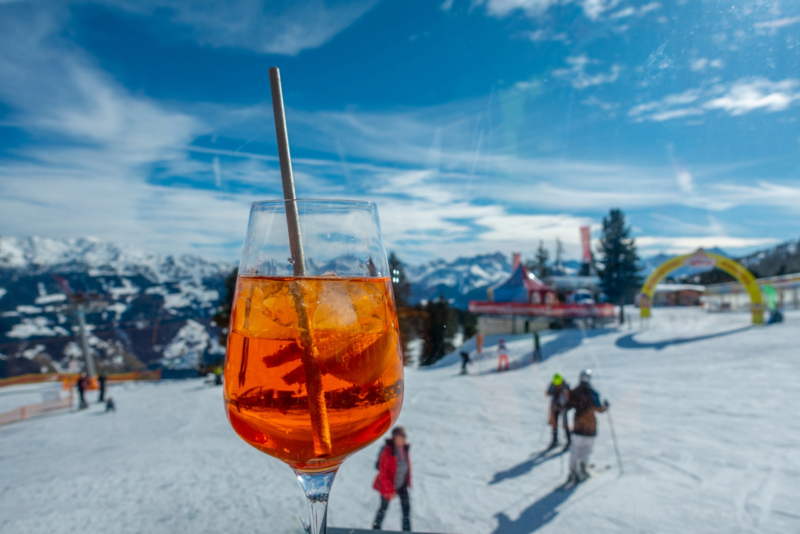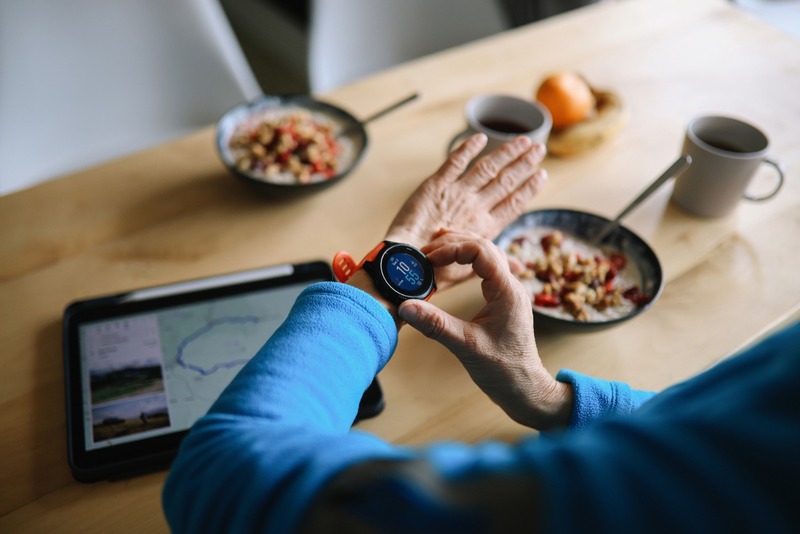News
Small Town Feel Big City Care
It's certainly not what many people living in or visiting Vail imagine when they find themselves in need of emergency healthcare services after a skiing or automobile accident perhaps or a heart attack but the care they receive here in this remote mountain community in Colorado rivals that of any large metropolis.
In some cases it's even better.
"Here at VVMC it's high tech meets high touch there's really no system quite like it" says Mark Goldstein director of emergency services at Vail Valley Medical Center overseeing staff operations at the hospital's main facility in Vail as well as others in Beaver Creek Village Avon and Gypsum. "We're very fortunate in this valley to have world-class destination mountain resorts and a world-class destination hospital."
Indeed VVMC's Emergency Department is unique having evolved since the early 1960s to serve a unique fast-growing resort community that was created to attract people to unique fast-growing and sometimes dangerous winter sports namely skiing then snowboarding.
Now serving a community of about 60000 full-time residents but with tens of thousands of adventurous tourists on any given day at high season as well the hospital's 24/7 Level III Trauma Center has evolved into a microcosm actually of its counterparts in major urban areas such as Colorado's Front Range but with intimacy and quick access a dichotomy of sorts between big city expertise and small town feel. VVMC's Emergency Department is the 4th busiest Level III Trauma Center in the nation and the 2nd busiest in Colorado.
"We see the same amount of traumas and heart attacks relative to anywhere in the nation" Goldstein says. "The nice thing about VVMC is it has the same services as a big city hospital."
To understand what makes VVMC's Emergency Department unique is to know its roots first as a rudimentary clinic in Vail in the basement of the Red Lion restaurant and bar the heartbeat of an outpost in the 1960s primarily created to serve a few hundred locals building a ski resort along with the occasional injured or ailing skiers from Vail Mountain.
Back then Ski Patrollers typically had no training in trauma care and patients requiring anything more than minimal medical attention had to be driven by highway to Aspen at least two hours drive by ambulance on a good day or to Denver up to eight hours away up and over Vail Pass and Loveland Pass on old U.S. Route 6 depending on weather.
Things changed with the arrival of Dr. Jack Eck a flight surgeon from Pennsylvania in the U.S. Army who moved to Vail in 1971 after tours of duty in Vietnam to become the town's third full-time doctor. He didn't know how to ski very well but he learned enough right away to join the Vail Ski Patrol that year as its medical director mainly so he could deliver a mobile medical kit to the scene of a trauma then have the wherewithal to use it effectively.
One day while riding Vail's Highline Lift for example he heard on Ski Patrol radio an innovation at the time a male skier was in cardiac arrest somewhere above Mid-Vail. Dr. Eck skied directly to the scene where he joined two other doctors to stabilize the patient.
"Just before I got there a cardiac surgeon skis up to help too. He had no idea what we had on the mountain but then a Ski Patroller skis up with a defibrillator we had in a cardiac kit at the top of the mountain then I ski up with the drugs and an anesthesiologist skis up too and we're all working on the guy and get him stabilized" Dr. Eck says. "The cardiac surgeon looks at me and says 'Where did all this stuff come from? We don't have this much stuff in the emergency room at home.' He couldn't believe what we had on the hill and we saved a life.
"That was really something in its time today it's normal" Dr. Eck adds. "Back then we had one kit on the whole mountain today we have a kit at every Ski Patrol HQ there's six of 'em."
Before that Dr. Eck's role with the Ski Patrol was called into play when a skier from Michigan Gerald Ford began visiting Vail to ski first as President of the United States in 1969 then more often years later in retirement at Beaver Creek. As Ford's personal doctor whenever the president was in town it was Dr. Eck's responsibility to organize communications and medical services including Flight for Life helicopter transport if necessary not only for Ford but his family and the entire Secret Service entourage.
"That really beefed up our services as an incentive to make sure our system really worked. We were able to show the Secret Service what we were able to do here" Dr. Eck says. "In fact we were doing it so well they actually copied the kits we had here and followed Ford around with them the rest of his presidency."
Perhaps the defining moment for VVMC's fledgling emergency services back then came in 1976 poignantly when two gondola cars fell from the cable high above Lionshead's Born Free ski run and plunged to the snow below killing four people and seriously injuring eight more.
"That's when having our act together meant everything. There were some people lost and it happened before we were even a hospital we were just a clinic and didn't have an ER" Dr. Eck says. "Without the interconnectivity we had from the mountain to the clinic we would have had many more deaths I believe. But it proved we weren't just a clinic that took care of broken bones off the mountain."
That spirit of "interconnectivity" and the on-mountain protocols it spawned make up the hallmark of what today is one of the most advanced trauma-scene-to-operating-room systems in the world says Dr. Barry Hammaker surgeon and chief medical officer for Mountain Surgical Associates a group of doctors at VVMC known not only for their expertise in emergency care but for assessing and managing a patient's situation from the scene of the trauma during their transport by ambulance to the emergency room and either on to the operating room or a helicopter for a flight to Level I facilities in Denver.
"The helicopter is just one piece of the system just like transporting an injured skier off the mountain is another" Dr. Hammaker says adding similar measures with the Vail and Beaver Creek Ski Patrols have continued to evolve now with paramedics local law-enforcement agencies Vail Mountain Rescue even the Eagle County SWAT Team. "In general if we're in contact we'll know who that person is or if anything what their capabilities are. That's important in terms of assessment of what's going on wherever the patient may be and what we need to get set up in the emergency room or operating room to move efficiently and quickly and proceed to a life-saving intervention."
A critical part of this combination of state-of-the-art communications among hospital staff and other agencies in oft-extreme mountain conditions and the teamwork involved is what distinguishes VVMC's Emergency Department from others says Dr. John "Chip" Woodland a 24-year veteran of emergency services now medical director for the department's physicians.
"One thing I've noticed after working at bigger hospitals in big cities everybody's here because they want to be here" Dr. Woodland says adding mountain camaraderie tends to manifest itself in the service an emergency department's dedicated staff provides. "People just seem to be happier here. There's a great team sense and collegial sense in this department."
Mary Jastrab a full-time charge nurse and staffer at VVMC's Emergency Department for 26 years agrees.
"My favorite description is 'pit crew' you have an accident or illness and when you come to us we have a team that works to get you back to your life vacation wedding work whatever" Jastrab says. "Patients comment on how well we work together and know each other. I think that makes them feel more secure."
"Taking care of your own is an honor and a privilege" Jastrab adds. "I think our ED does a great job making you feel like you are one of us."
Goldstein meanwhile points to the department's patient satisfaction scores among the best in the United States. In 2015 for example Vail Valley Medical Center's emergency care services were ranked in the 95th percentile he says.
"We focus on exceptional customer service and care. This is a huge feat" Goldstein says. "We all have the same mission to provide high-quality healthcare but here we provide a heck of a lot better guest service. Just go sit in the waiting room for four hours at a big city emergency room just to get seen instead. Here we're seeing you faster and we have a very personal touch."
VVMC Emergency Services | vvmc.com/emergency | (970) 479-7225
More News
-
New!
More

First Chair to Last Call: What Does Alcohol Really Mean For Your Health?
In nearly every Colorado ski town, some iteration of the neon sign blares its play-hard-party-harder anthem. It’s a not-so-subtle nod to mountain party culture, a lifestyle that normalizes combining sports and outdoor adventures with heavy drinking and partying. In Eagle County, après culture, high-altitude living and outdoor performance have coexisted for as long as locals have been sliding on snow. But how much is too much at altitude? And what role do social support systems play in helping residents find balance?
-
New!
More

Counting More Than Steps: How Wearables Can Help (or Hinder) Your Health
From step counts to sleep stages, heart rate variability to blood sugar spikes, wearable devices are giving us a front-row seat to what’s happening inside our bodies. Strapped to wrists, slipped onto fingers or wrapped around our biceps, wearables like the Oura Ring or Whoop strap promise insight and advice in the quest for better health.
-
More

Cass Barham and Sarah Crabtree Honored As Recipients of Vail Health Elevate Award
Cass Barham and Sarah Crabtree, both lab techs at Vail Health Hospital, have been named recipients of the Vail Health Elevate Award. Vail Health created the Elevate Award in June 2022 to give patients and their families an opportunity to nominate and thank employees who have touched their lives in some way.
